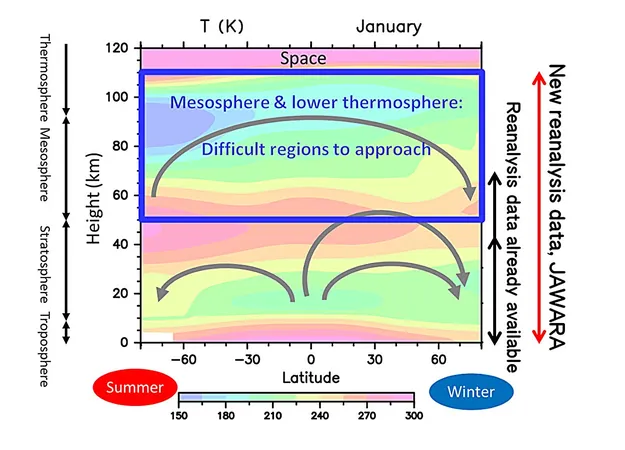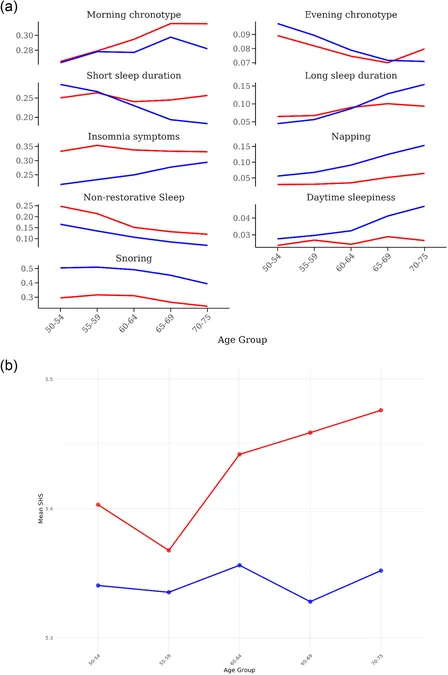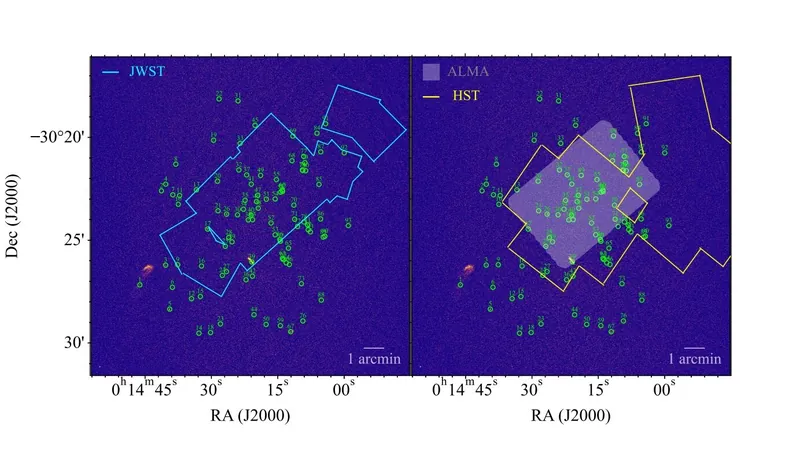
Unlocking Atmospheric Secrets: New Dataset Aims to Revolutionize Climate Models and Space Weather Predictions
2025-01-10
Author: Sarah
Unlocking Atmospheric Secrets: New Dataset Aims to Revolutionize Climate Models and Space Weather Predictions
A groundbreaking achievement from researchers at the University of Tokyo is set to transform our understanding of the atmosphere with the creation of a comprehensive dataset covering nearly two decades. This innovative research, published in the journal *Progress in Earth and Planetary Science*, aims to enhance climate models and improve space weather forecasts.
The team utilized a cutting-edge data-assimilation system known as JAGUAR-DAS, which brilliantly combines sophisticated numerical modeling with real-world observational data. This advanced methodology has resulted in a vast dataset that spans from September 2004 to December 2023, detailing multiple layers of the atmosphere from ground level all the way to the lower edge of space—approximately 110 kilometers above Earth.
Why is the Ignorosphere So Important?
One of the most intriguing aspects of this research is its focus on the "ignorosphere," a region between 50 and 110 kilometers up in the atmosphere that has long been shrouded in mystery. This zone is notoriously difficult to study due to its positioning; it's too high for traditional weather balloons and too low for satellites, leading to significant data gaps that have hindered scientific understanding. The new dataset helps fill this critical void.
The ignorosphere is not just a barren stretch of air; it features complex interactions characterized by global atmospheric tides and gravity waves that significantly influence wind patterns and temperatures. Crucially, this region also plays a pivotal role in how Earth's atmosphere interacts with space weather events, which can have profound effects on technology and weather systems down on the ground.
Harnessing the Power of JAWARA
The newly developed dataset, dubbed JAWARA (JAGUAR-DAS Whole neutral Atmosphere Reanalysis), offers unparalleled insights into atmospheric dynamics. "For the first time, we can quantitatively analyze the atmospheric general circulation alongside the complex hierarchal structures of waves and vortices occurring within the mesospheric and lower thermospheric layers,” explains Professor Kaoru Sato from the University of Tokyo. “This understanding is vital for developing better responses to climate change and enhancing the accuracy of seasonal weather predictions."
The JAGUAR-DAS assimilating system operates under an international collaboration led by Sato, seamlessly integrating observational data into numerical models. This might be a game-changer for meteorologists and researchers who seek to forecast weather with greater precision.
Real Implications for Climate and Weather Prediction
With the alarming rise of extreme weather phenomena driven by climate change, understanding the upper layers of the atmosphere is becoming increasingly crucial. Recent studies suggest that many extreme events can be traced back to interactions occurring in the upper mesosphere. This realization underscores the importance of the new dataset in refining our predictive capabilities.
The open availability of the JAWARA dataset provides researchers worldwide with a powerful tool to investigate large-scale atmospheric trends and vertical couplings between the Northern and Southern Hemispheres. Future collaborative efforts with space scientists are also on the horizon, with aims to explore the intricate relationships between the atmosphere, the mesosphere, and the ionosphere, the latter of which hosts many satellite operations.
In short, the creation of this extensive atmospheric dataset not only opens the door to a deeper understanding of Earth’s climate system but also positions researchers to better anticipate the environmental challenges that lie ahead. Don’t miss out on this scientific revelation—could this be the key to predicting our planet's future?




 Brasil (PT)
Brasil (PT)
 Canada (EN)
Canada (EN)
 Chile (ES)
Chile (ES)
 Česko (CS)
Česko (CS)
 대한민국 (KO)
대한민국 (KO)
 España (ES)
España (ES)
 France (FR)
France (FR)
 Hong Kong (EN)
Hong Kong (EN)
 Italia (IT)
Italia (IT)
 日本 (JA)
日本 (JA)
 Magyarország (HU)
Magyarország (HU)
 Norge (NO)
Norge (NO)
 Polska (PL)
Polska (PL)
 Schweiz (DE)
Schweiz (DE)
 Singapore (EN)
Singapore (EN)
 Sverige (SV)
Sverige (SV)
 Suomi (FI)
Suomi (FI)
 Türkiye (TR)
Türkiye (TR)
 الإمارات العربية المتحدة (AR)
الإمارات العربية المتحدة (AR)